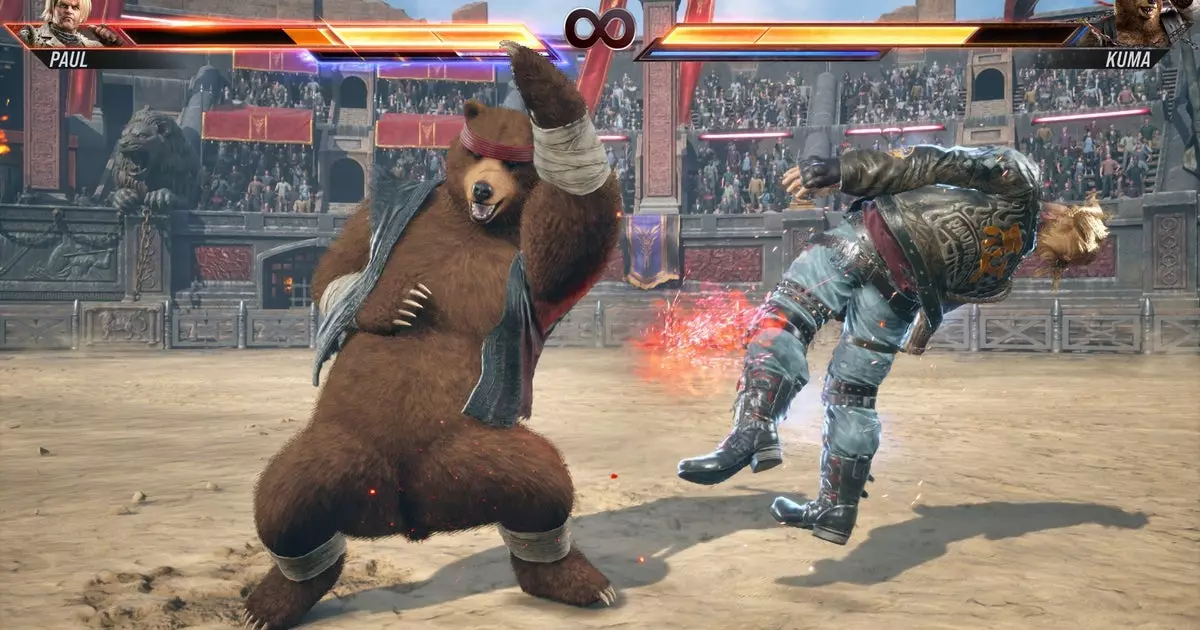In the ever-evolving world of fighting games, the introduction of new mechanics can often stoke passion and enthusiasm among fans. Yet, there are moments when these very innovations can lead to discontent. Enter the mod “Good Ass Tekken,” a bold initiative aimed at peeling back the layers of complexity that have crept into the Tekken franchise over the years. Created by the modder KulaGGin, this modification serves as a nostalgic nod to the more straightforward days of Tekken 5, stripping away the newer features that are meant to enhance gameplay but, ironically, may have muddied the waters for seasoned players.
The mod’s design philosophy hinges on the belief that less is more. By removing the heat bar, rage state, armoured moves, and tracking attacks, “Good Ass Tekken” seeks to recapture the raw gaming essence that made earlier iterations of Tekken captivating. The heat bar, a feature introduced in the latest installment, brings unique strategies and layered depth to the game but can simultaneously create an environment where a single mistake can spiral into defeat. Similarly, the rage system, intended to provide exhilarating comeback mechanics, has its share of critics who argue that it disrupts the natural flow of combat and rewards risk-taking to an excessive degree.
The Dichotomy of Old and New Mechanics
At the heart of this mod lies a contentious debate that exists within the Tekken community: the enjoyment of flashy, aggressive new mechanics versus the allure of a simpler, more strategic approach. KulaGGin argues for a game that emphasizes fundamental skill over flashy displays, which can overwhelm both new and veteran players. After all, mastering footsies—those subtle distance maneuvers that dictate engagement—is a critical aspect of fighting games that can be lost when players are bombarded with overwhelming choices.
From a traditional perspective, increased backdash distances and a more significant penalty for whiffed launching attacks reflect a purist’s ideal. These adjustments breathe life into a tactical approach that demands players think three or four moves ahead. In this reverted gameplay space, ahistorical advantages that derailed strategy in the newer titles find no refuge. Combat becomes a chess match, stripping away the distracting theatrics that might lead players astray.
A New Audience for a Classic Experience
An essential question arises: who stands to gain from a nostalgic remake of a beloved series like Tekken? The answer seems to tilt toward a demographic of “grizzled Tekkenistas,” players who have cut their teeth on earlier games and find themselves frustrated by the escalating chaos of the modern iterations. While the allure of the competitive scene and the spectacle of new features draw newcomers, the mod offers a unique sanctuary for veterans—an arena where the skills they honed through years of play can shine unimpeded.
Yet, there is the flipside to consideration. As much as one may crave a return to simpler times, innovations in game mechanics are often designed to expand the player base and keep the franchise relevant in an era driven by sensationalism and rapid-fire entertainment. In striking that balance, it’s vital not to disregard the excitement that new features bring. For many, systems like the rage state are more than just a “smash glass in case of bear” safety net; they create thrilling moments that keep audiences on the edge of their seats.
The Future of Fighting Games: Embrace or Reject?
Ultimately, the conversation surrounding “Good Ass Tekken” encapsulates larger issues in the gaming industry. As more players embrace diverse ways of engaging with games, from casual to competitive, the modulation of experiences becomes paramount. The mod’s existence reflects a desire not only for customization but for a return to identity—a yearning to embrace the fighting game genre’s roots without the trappings that have come to define its modern form.
In this ever-evolving landscape, the challenge persists: how do developers weave the essence of classic gameplay with the demands of a modern audience? The intricate balance can lead to both innovation and frustration; can a mediated experience exist that honors the core of what made Tekken captivating while also accommodating the expectations of today’s gamers? The enactment of a “no frills” mode may serve not just as a tribute but also as a powerful statement that diversity in design contributes to the richness of the fighting game culture.

